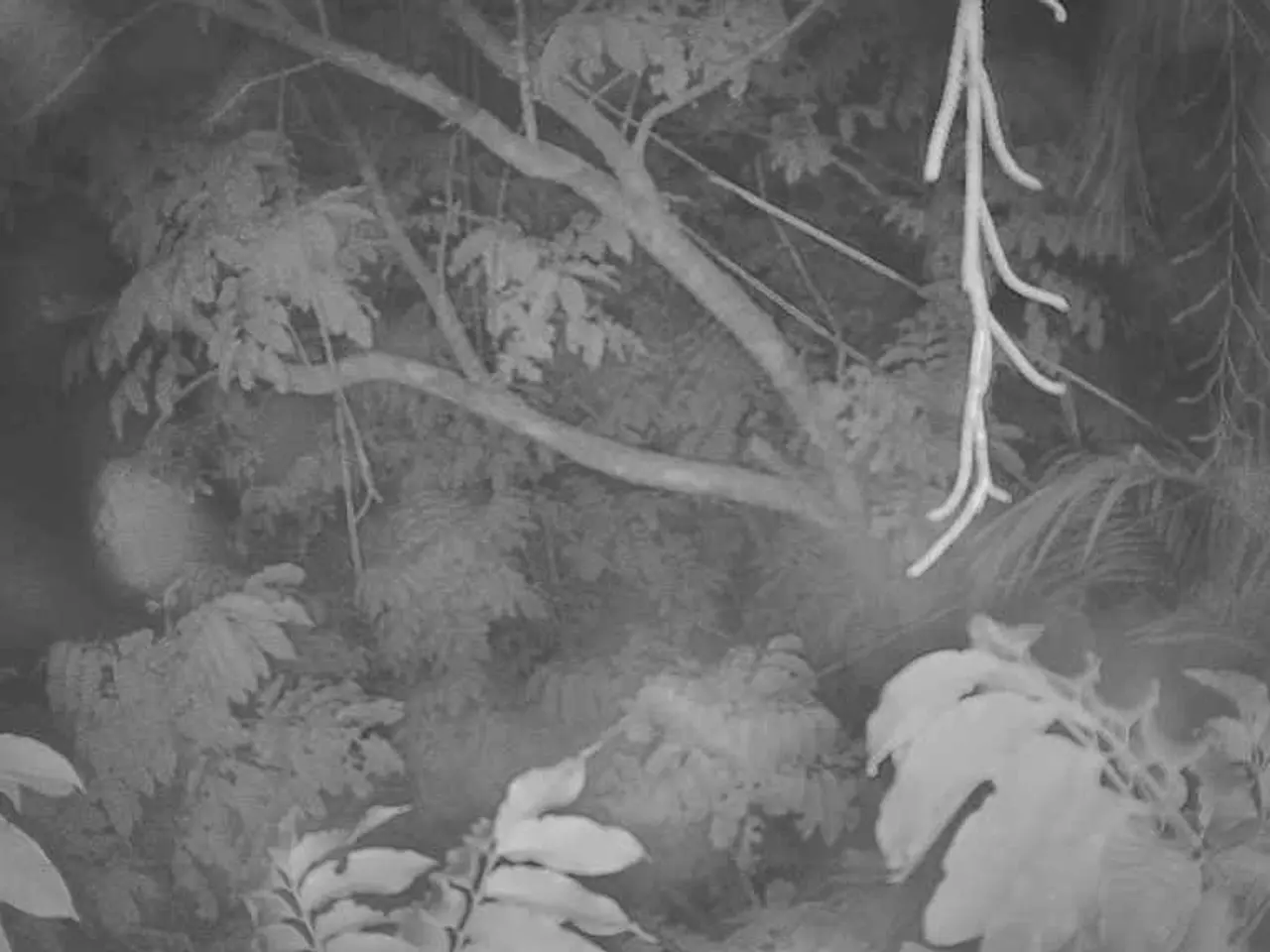Procedure for Trimming a Plum Arbor
Plum trees are a popular choice for many gardeners, but ensuring their health and productivity requires careful pruning. Here's a comprehensive guide on how to prune plum trees, focusing on the best practices to prevent silver leaf disease.
The Optimal Pruning Time for Plum Trees
The mid to late summer months, specifically July to September, are the optimal times for pruning plum trees to minimise the risk of silver leaf disease. This fungal disease spreads more easily when pruning wounds are exposed to colder, wetter conditions typically found outside of summer[1][2][3].
The Best Pruning Technique for Plum Trees
Pruning plum trees involves several key steps. First, use sharp, clean, and disinfected tools to make clean, angled cuts just above a bud or side shoot. This helps wounds heal quickly and prevents disease entry[1]. Second, thin the canopy to improve sunlight penetration and airflow, reducing humidity and wetness inside the tree[1]. Lastly, avoid pruning in winter or wet seasons, as pruning wounds then are more vulnerable to fungal infection[2][3].
Maintaining Plum Tree Health
Young plum trees (up to three years old) should be lightly pruned in spring to create a 'bush' shape with an open centre. Established plum trees (more than three years old) can be pruned in summer to keep the tree manageable and allow fruit to ripen. Pruning fruit trees encourages a good size and shape, keeps the tree productive, and removes dead and damaged wood[4].
Choosing the Right Tools
Using the right tools is essential for pruning plum trees. Long-handled loppers, pruning saw, or secateurs are recommended. Some tested and trusted options include the ARS PM-21 folding pruning saw, Felco 640 pruning saw, Darlac Expert Bypass DP1030A, Niwaki GR Pro, Felco 8 Bypass Secateurs, Draper Deluxe Anvil Secateurs, Corona Ratchet Cut Comfort Gel Anvil Secateurs, Wolf Garten Telescopic Anvil Lopper, and Spear & Jackson Razorsharp Advantage Telescopic Ratchet Anvil Lopper[5].
Caring for Your Plum Tree
Lack of moisture at the roots or a late frost affecting spring flowers might cause a plum tree to be unproductive or biennially bearing. Leafy summer prunings can be added straight to the compost heap where they'll rot down quickly. Prune away any older branches that are growing into the centre of the tree, aiming to create an open, goblet shape for the plum tree[4].
Pruning for Productivity
Heavy pruning can affect cropping, as fruits are produced on one- or two-year-old shoots. Prune all of the branches back by about a third, cutting to just above a bud, in the first step of pruning. Keep the tree in good health by cutting out any older branches that are weak, damaged, competing, or crossing, in the second step of pruning[4].
Renovating an Old Plum Tree
Renovating an old, neglected plum tree should be done gradually over several years. Established plum trees can be pruned in summer to keep the tree manageable and allow fruit to ripen[6].
In summary, pruning plum trees only during summer with sharp, disinfected tools making angled cuts, and focusing on thinning the canopy to maximise airflow, minimises the risk of silver leaf disease effectively[1][2][3]. By following these guidelines, you'll ensure the health and productivity of your plum tree, providing you with delicious fruits for years to come.
[1] https://www.rhs.org.uk/advice/profile?pid=356 [2] https://www.bbc.co.uk/gardening/howto/fruit/plum-tree-pruning [3] https://www.gardenersworld.com/how-to/job/how-to-prune-plum-trees [4] https://www.gardensandgrowing.co.uk/how-to/how-to-prune-plum-trees/ [5] https://www.thespruce.com/best-pruning-saws-for-gardening-4173531 [6] https://www.gardeningknowhow.com/edible/fruits/plum/pruning-plum-trees.htm
Pruning plum trees during mid to late summer months is advised to prevent silver leaf disease, as it spreads more easily when pruning wounds are exposed to colder, wetter conditions typically found outside of summer. To maintain plum tree health and productivity, one should use sharp, clean, and disinfected tools to make angled cuts just above a bud or side shoot, thin the canopy to improve sunlight penetration and airflow, and avoid pruning in winter or wet seasons.




